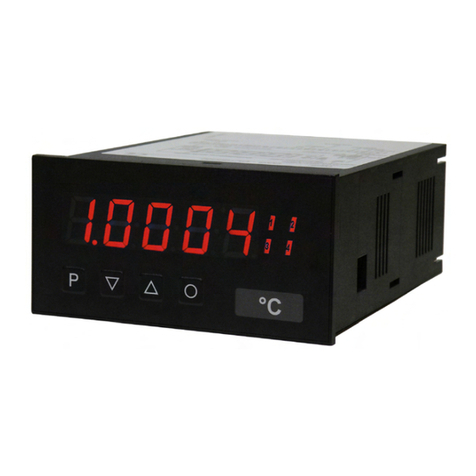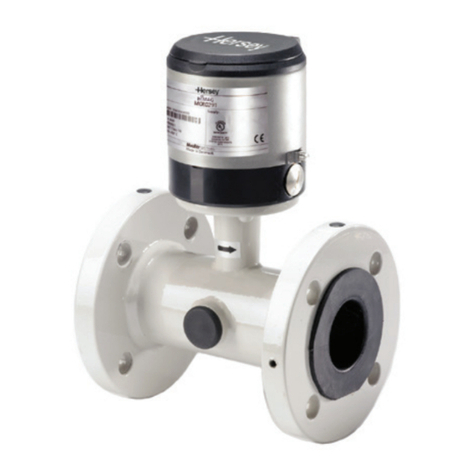
7
5.1. Switching on
Once the installation is complete, you can start the device by applying the voltage supply. Before, check
once again that all electrical connections are correct.
Starting sequence
For 1 second during the switching-on process, the segment test (8 8 8 8 8) is displayed followed by an
indication of the software type and, after that, also for 1 second the software version. After the starting
sequence, the device switches to operation/display mode.
5.2. Standard parameterisation: (Flat operation level)
To parameterise the display, press the [P] key in operating mode for 1 second. The display then changes to
the menu level with the first menu item TYPE.
5. Setting up the device
5. Setting up the device
Setting the end value of the measuring range, END:
Default: 10000
Set the end value from the smallest to the highest digit with [▲] [▼] and confirm each digit with
[P]. A minus sign can only be parameterized on the highest value digit. After the last digit, the
display switches back to the menu level. If a sensor calibration was selected as input option,
you can only select between noca and cal.With noca, only the previously set display value is
taken over, and with cal, the device takes over both the display value and the analogue input
value.
Setting the start/offset value of the measuring range, offs:
Default: 0
Enter the start/offset value from the smallest to the highest digit with [▲] [▼] and confirm each
digit with [P]. After the last digit the display switches back to the menu level. If a sensor
calibration was selected as input option, you can only select between noca and cal.With noca,
only the previously set display value is taken over, and with cal, the device takes over both the
display value and the analogue input value.
Selection of the input signal, tYPE:
Default: s.600u
There are several measuring input options: 0-600/-300 VAC or 0-5/-1 AAC signals as works
calibration (without application of the sensor signal) and S.600v, S.300v, se.5a and se.1a as sensor
calibration (with the sensor applied). Confirm the selection with [P] and the display switches
back to menu level.
Parameterisation levelMenu level





























